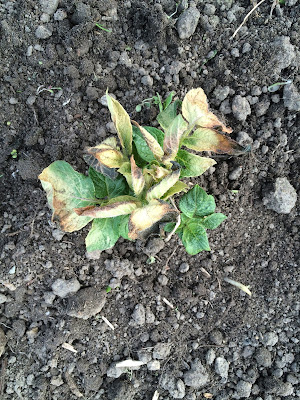New Helpers at Allotment

That's Sparky & Cleo, the new additions to the household. Getting a rescue dog from the Scottish SPCA has been on the family agenda for years. The time has come. These two were a package, we suspect Sparky (left) is Cleo's daughter. God knows who the father was. Some kind of whippet? A Jack Russel? Anyway, they've been taking up most of the weekend, getting them settled in. So less constructive allotmenteering than I would have liked. I did get there tonight without the dogs for 90 mins or so. Put in a couple of rows of Desiree (main crop spuds), just a regular bag I'd bought from Tesco. Did a bit of weeding. Yesterday, the dogs ran around a lot on the beds, and some rows of seedlings will not have benefitted from the treatment. But I'm learning to be pretty Zen about these things. It's all a process. One sackful of spuds will be better than no sackful of spuds. This year, I'm in a desperate hurry to get it all under cultivation, and I should achie...































